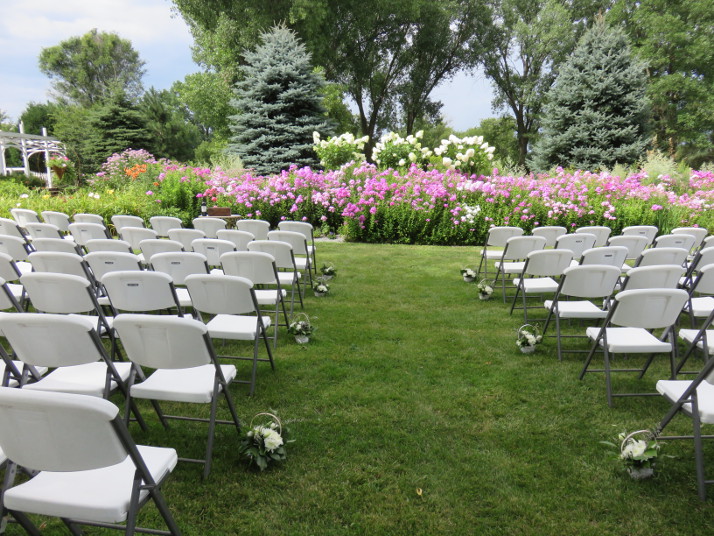An Accommodating Wedding
Hosting an accommodating wedding means being thoughtful and planning for the needs of any differently abled guests and members of the wedding party. If you have bridesmaids, groomsmen, guests, or even if you yourself have mobility or other limitations there are many things to consider. The good news is that there are many small things you can do to ensure everyone is able to participate fully in your wedding day.
Hosting an accommodating wedding starts very early on in the planning process as you consider venues for your ceremony and reception. If people will be in wheelchairs, check for doorways wide enough to accommodate the chair. Look for ramps or lifts near any steps on the site. Check out the restrooms for accessibility, too. Now look at the ceremony space – can chairs be moved to allow a beloved grandparent a front view of the ceremony? Are aisles wide enough to accommodate the chair? And this would be a good time to avoid an aisle runner or other obstructions that could cause difficulties for wheelchairs or walkers. If people will be walking with crutches, check for even ground/floor surfaces that are not slippery.
When seeking to provide a welcoming and accommodating wedding experience, consider, too, people with sight or hearing limitations. They may need a reserved seat near the front, or near a speaker to fully appreciate the ceremony. A different kind of limitation is language. If parents or grandparents do not speak English, consider having your ceremony translated so they can follow along on a printed copy left on their seats. You may also choose to offer some or all of the ceremony in two languages to allow them to more fully participate.
Wheelchairs can be gracefully included in the processional with a bridesmaid holding the handle of the groomsman’s chair as he rolls down the aisle, or a festively decorated chair for the bride pushed by her escort as she enters the ceremony space. If standing for the duration of the ceremony is difficult, attendants can be seated in chairs to each side, and two chairs can be set for the bride and groom in the center of the space. If you’re able, you can choose to stand for the exchange of vows and rings, and return to chairs for the rest of the ceremony. It may also be possible to have a table on wheels rolled to you for your unity ritual.
With some thought, creativity and planning an accommodating wedding can be created that allows everyone to fully and comfortably celebrate with you as you cross the threshold into marriage. Your thoughtfulness will be appreciated, and your day memorable when you seek to welcome everyone to the celebration.

